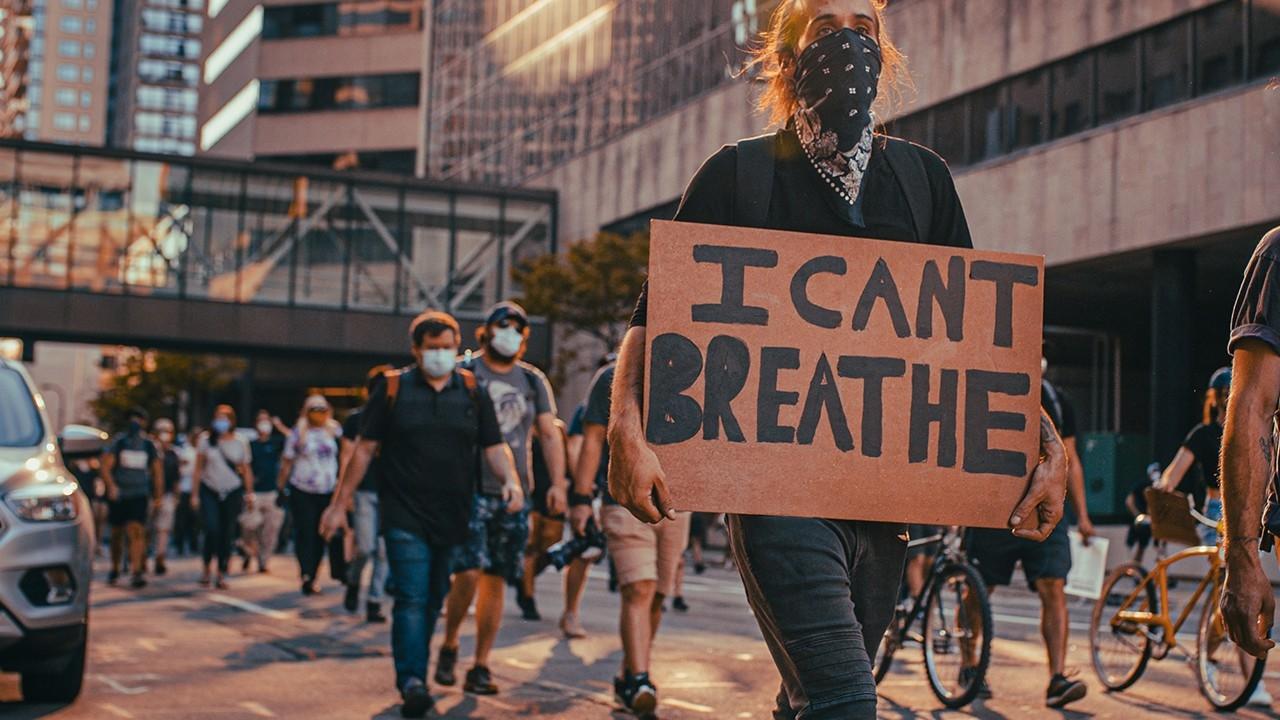The history of discrimination law in the U.S.

In 1966, when the EEOC started collecting data on the race and gender composition of workplaces, white men were overwhelmingly overrepresented in power positions. African American men and women and white women were dramatically underrepresented in them relative to their numbers in the labor force.
While Title VII of the Civil Rights Act of 1964 fostered some progress for white women, white men still retain power in the U.S. private sector workforce. Discrimination continues — and at an unchanged rate. There are major earning disparities between racial and gender groups. According to the authors of Rights on Trial, in 2014, median incomes were:
“Asian American men: $59,766
White men: $58,712
Asian American women: $48,419
White women: $44,236
African American men: $41,167
African American women: $35,212
Latino men: $35,114
Latina women: $30,289” (almost half of the median income for Asian American men)
Yet the early years of Title VII seemed promising. Back then, the Supreme Court fostered c...
Discrimination law doesn’t actually dismantle social hierarchies

Instead, it preserves managerial authority, dominated by white men, and reproduces hierarchies by focusing on individual harm — rather than disrupts hierarchies.
Are civil rights truly rights if we have to pay to get them through the legal system? Does law disrupt social hierarchies or perpetuate them? Authors Ellen Berrey, Robert L. Nelson, and Laura Beth Nielsen dig for the answers to these crucial questions in Rights on Trial.
Their finding: employers, agencies, and courts often re-inscribe the very hierarchies discrimination law was designed to attack, making discrimination both an intentional and structural problem. Civil rights law doesn’t actually affect social change by correcting discriminatory behavior at work because it upholds the bias through stereotypes that created the discrimination in the first place.
Here’s the reality about use of and access to justice:
Most targets don’t involve the legal system. Only a tiny fraction of targets approach the EEOC, predominantly a...
What generally happens when targets of workplace abuse report their cases to HR

I know some of you work in Human Resources (HR) and help targets of workplace abuse. And for that, I thank you. However, the sad truth is that you are in a tiny minority of HR representatives who advocate for the target because you work in a safe and healthy work environment in which higher-ups want to do the right thing.
In most cases, HR does nothing — unless you count retaliates or terminates the target. They work for management, not employees, so even if HR reps do want to help, their hands are usually tied, meaning it's a management problem.
It's not just management's responsibility to create a workplace abuse policy but also to make sure HR reps enforce it. Otherwise it's not worth the paper it's printed on.
So what will it take to get management to create policies and enforce them? Sadly, it will take passing a law giving employees a right to sue for mistreatment to switch their liability. For years, higherups have considered liability as admitting there's a problem, but the ...
Why so many employers side with abusers — and the consequences for them

Let's face it: abusers at work rarely face consequences for their abusive behaviors. More often than not, targets get dismissed, discounted, or flat-out ignored, which of course sides with abusers. Top-level executives most often support higher level managers in the name of preserving their team to work in the direction of their company goals and preventing liability by admitting fault.
But in choosing to support abusers and leave targets unprotected, employers actually work against their own self-interests. When they fail to hold abusers accountable, employers create an increasingly toxic culture, emboldening abusers and sending their top performers to their competitors.
Sadly, many employers protect abusers by either ignoring complaints or conducting sham investigations, having no interest in correcting a problem that doesn't serve them in the long-term.
Take Your Dignity Back
If you feel like you’re stuck in a big rut that’s destroying your life, learn how to reverse the damage...
What stops abuse at work

Even in toxic workplaces, senior managers' goal is to function as a unit — even if it's a horribly dysfunctional or even corrupt unit. Functioning as a unit requires support of the top, even if support doesn't come from the top, in a system with a drastic asymmetry of power.
So once targets speak up, no matter how justified they are in their claims, they put bullseyes on their backs.
Extremely infrequently, filing a lawsuit or complaint with an outside agency, union, or HR, direct confrontation of an abuser, and intervention from the abuser's boss help targets stop the abuse — making all of these strategies nearly equally effective as doing absolutely nothing.
In fact, doing absolutely nothing can at least prevent the abuse from escalating and preserve a target's reputation in the industry.
But the most effective way to stop the abuse is for targets to remove themselves from the rigged game. We're talking quitting (standing more in one's power than waiting to be forced out, also k...
Do workplace abusers intend to inflict pain?

Some might argue that abusive behavior reveals malicious intent. Others say we can't possibly know abusers' intent and that some don't intend to inflict pain, but there should be accountability.
Regardless, many targets — who've all been on the receiving end of abusive behavior and understand nuances of it better than most — believe that abusers at work fully try to inflict pain and that abuse requires deliberate action intended to create or reinforce a hierarchy of power and control.
In fact, while some abusers may just not know better, many use abuse as a tactic to disguise incompetence and deflect it onto those whose competence poses a threat.
Take Your Dignity Back
If you feel like you’re stuck in a big rut that’s destroying your life, learn how to reverse the damage.
Right now, you wish you could just tell your bully at work to knock it off, report the problem to management, and show the bully how childish he or she’s behaving. At best, the bully’s sidetracking the goals of...
The most offensive aspects of abuse at work

Abuse is demeaning, disempowering, and humiliating. Here are some ways the abuse cuts deep, in order of how they often occur:
- Painting competence as incompetence. Going after a target's technical skill — usually stronger than the abuser's — is a common tactic for abusers, whose goal is to re-define the image of the target and position the target in a negative light. It's an abuse of power that often takes the form of a negative performance review — a bold lie.
- Public humiliation. Abusers add insult to injury when they take their re-defining public. Not only do abusers control the target's image through public humiliation, but they also pile on shame and social isolation, positioning the target as someone not to associate with to avoid the same fate.
- Ignoring. Ignoring of complaints often invalidates them in the eyes of targets. It's a form of gaslighting that makes targets question their own sanity and perceptions of feeling wronged or that there's a significant problem, dumping m ...
How targets of workplace abuse offset the pain

Abuse causes pain, and targets look to both positive and negative vices to offset it:
Negative vices
- Social isolation. Along with job control, social support is crucial for a healthy work environment. While mobbing creates social isolation, and abuse creates shame and depression that lead to isolation, human connection and validation can help targets of workplace abuse realize they aren't alone and they aren't the problem.
- Self-destruction. Drinking, overeating, and undereating are all destructive coping mechanisms for abuse.
- Abuse. Some targets use abuse to cope with abuse, taking their pain out on family and friends.
Positive vices
Human connection, exercise in moderation, spirituality, and focusing on activities that bring us joy and take us out of laser-focusing on the abuse can all help offset the pain and lead to recovery. Once the initial shock and stress wear off, targets tend to look more to positive vices to aid in healing.
Take Your Dignity Back
If you feel like y...
How targets of workplace abuse find justice without a law

When a competent target poses a threat to a deeply insecure aggressor, the target generally feels unfairness and injustice. But how do targets attempt to find justice without a law or without using the legal system, full of asymmetry of power and discrimination, if they have evidence of discrimination?
The sad truth is that most targets of workplace abuse don't find justice. Many simply view justice as consequences (aka job loss) for the abuser and restoring their own employment if they left or were terminated.
But targets can find some justice through:
- Exposing the abuse — either to senior management or the media. In other words, feeling heard in a situation where they feel invisible and as though their feelings are irrelevant.
- Advocating for legislation to end workplace abuse, also taking back power by feeling seen and heard.
- Putting themselves first, often by leaving the job and making their health and career a priority over the toxic workplace.
Hiring an attorney and suin...
How targets of workplace abuse have to pay for treatment they didn’t deserve

Bullying leads to stress, and stress leads to health problems. Health problems can then eventually lead to poor work performance. At that point, targets can either:
- Take paid sick leave, which lets employees recover from the health problems
- File for workers compensation
- Take family medical leave
- Seek disability insurance
Types of sick leave targets chose
Targets often choose between the Family Medical Leave Act (FMLA), disability, and workers compensation (WC).
- FMLA. FMLA is available to employees whose companies have 50+ employees and can be voluntary or forced, paid or unpaid.
- Disability insurance. Targets can also take short-term or long-term disability. Early retirement may also be an option.
- WC. Employees can sometimes claim psychological stress as a work injury (though some states do not allow it). WC claims may interfere with a target's ability to file a lawsuit.
With currently less than one-fifth of all U.S. states have paid FMLA or paid sick leave, employers c...
